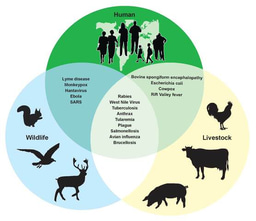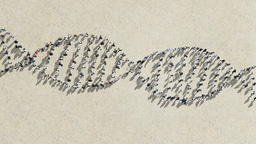HIV Vaccine Awareness Day 2025 – working together to find a safe HIV vaccine
Published in Social Sciences, General & Internal Medicine, and Immunology

HIV Vaccine Awareness Day is an annual occasion to celebrate the efforts of scientists, advocates and patients dedicated to finding a safe and preventative vaccine against human immunodeficiency virus (HIV). Led by the National Institutes of Health, this day highlights the challenges still faced by those living with HIV, and emphasises the need for innovation in order to find an effective vaccine. With qualities such as rapid mutation rate and the ability to hide in reservoirs, HIV proves challenging for the immune system to effectively tackle, increasing the need for specialised and cutting-edge tools. However, progress is being made in this research area, with particular focus on broadly neutralising antibodies and other strategies to elicit strong immune responses.
This blog post compiles open access research published across Springer Nature’s imprints, that increase understanding of HIV’s mechanisms and contribute to the development of a safe and accessible preventative vaccine.
Highlights from across Springer Nature:
Browse our Journal Collections:
Addiction Science & Clinical Practice publishes the collection, “Pre-exposure Prophylaxis for People Who Use Drugs”, acknowledging the increased HIV risk experienced by injection drug users. This collection amplifies research exploring the improvement of Pre-exposure Prophylaxis (PrEP) delivery to people who use drugs, and highlights specific outcomes along the PrEP care continuum.
In Harm Reduction Journal, explore research published in the open collection, “Community-Engaged Harm-Reduction Research for Social Justice”, which includes research on different approaches to engage communities in new developments, such as HIV vaccination.
In AIDS Research and Therapy, explore the open collection, “Studies of HIV from Australasia, East Asia and the Pacific”, which publishes research addressing the pathogenesis and management of HIV in Australasia, South East Asia and the South Pacific.
In Scientific Reports, the open collection “Preventing sexually transmitted infections” highlights different preventative methods to tackle STIs, including HIV.
Finally, BMC Global and Public Health publishes articles within the open collection, “Ensuring equality in vaccine access: Addressing global inadequacies”. This collection is focused on achieving equitable vaccine access, including a HIV vaccine.
Research highlights:
HIV prevention
One article published in Harm Reduction Journal explores PrEP service delivery for HIV prevention, whilst another looks to develop ethical frameworks to involve incarcerated drug users in HIV prevention research. Addiction Science & Clinical Practice publishes many articles on PrEP’s role in HIV management, including the readiness of systems in ensuring drug users take PrEP, the reasoning behind the choice of using PrEP as HIV prevention, and the determinants of success/failure of programs distributing PrEP to different populations. Articles also look at maximising uptake of PrEP in specific communities, as well as introducing cultural adaptations to PrEP promotion.
Tracking prevalence and diagnosis
In npj Viruses, research focused on Fiji helps in outbreak tracking and contributes to the identification of transmission hotpots. Meanwhile, Nature Communications Medicine publishes articles exploring the impact of circumcision on HIV prevalence, immune cell alterations in HIV, and the potential to integrate a digital tool into HIV diagnostic practice.
Treatment development
In npj Viruses, one article highlights research on antibodies that could inform the design of a HIV vaccine. Also, npj Vaccines publishes research evaluating the safety and immunogenicity of HIV-1 vaccines, in addition to articles showing NIAID-funded antibody research and preliminary tests on mice that may enhance protective efficacy of HIV vaccines. Nature Communications Medicine also publishes research showing elevated IFNα as a key mediator of HIV pathogenesis, as well as proposing a new tool that could quantify HIV-1 reservoirs. Springer’s Archives of Virology publishes a study identifying a novel HIV-1 third-generation circulating recombinant.
Ongoing trials published in the ISRCTN Registry:
Several clinical trials registered with the ISRCTN registry aim to further HIV research. The Scottish ePrEP Clinic Feasibility Study aims to reduce HIV transmission by providing PrEP online, making preventative care more accessible. Another trial aims to reduce stigma faced by sexual and gender minorities living with HIV, through the development and implementation of a cognitive behavioural therapy (CBT) intervention. Furthermore, another initiative strives to improve detection and prevention methods for blood borne viruses, including HIV and Hepatitis B/C, by identifying high-risk individuals using a computer algorithm.
Explore Springer Nature Book Content:
Read research exploring how messenger RNA based vaccines could be used to target infectious diseases, coauthored by Nobel Prize winner Drew Weissman. This chapter discusses progress in mRNA vaccine development and highlights challenges that need to be overcome in future research. Furthermore, another chapter looks at the unique challenges faced by mothers living with HIV. This chapter considers this mothering experience in different socioeconomical contexts, examining cultural and historical impacts.
Research Communities Contributions:
Explore Springer Nature’s Research Communities platform, hosting different kinds of blogs related to HIVVAD25. This includes an Editor Q+A for World AIDS Day 2024, where Professor Aguinaldo R. Pinto, Retroviruses Section Editor for Virology Journal, shares insights about the development of HIV/AIDS research. Furthermore, explore Behind the Paper blogs, looking at the impact of HIV on the COVID-19 vaccine, and the use of proteomics to explore changes in blood plasma proteins in early-stage HIV. This blog, written for the SDG3 newsletter, reflects on research developments since the AIDS epidemic and considers the withstanding effects on the LGBTQ+ community. Discover this 'Behind The Paper' blog from the authors of a Nature Communications article, which focuses on the use of T Cells in the fight against HIV. Another 'Behind the Paper' blog considers retooling NK cells, aiming to increase the efficacy of HIV vaccines. Finally, read this blog exploring the need for culturally tailored HIV prevention methods, from researcher Dawn Goddard-Eckrich.
Get involved:
National Institutes of Health’s National Institute of Allergy and Infectious Diseases (NIAID) leads this awareness day. This is a day to thank volunteers, community members, health professionals and research scientists working towards a shared goal of developing a preventative HIV vaccine. Share research to promote awareness, donate towards research progression and find out more about how you can contribute on the official website.





Please sign in or register for FREE
If you are a registered user on Research Communities by Springer Nature, please sign in